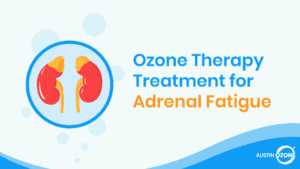
Ozone Therapy for Adrenal Fatigue
In our modern world where people are constantly exposed to a lot of stress and toxins, maintaining a good sleeping habit and healthy diet can be difficult at times.



Before we can talk about ozone (O3), we must talk first about oxygen (O2), from which ozone is formed. The oxygen we breath originates primarily from two places—the plankton of the sea and the new growth of forests. An oxygen molecule (the smallest amount of a chemical substance that can exist without further breaking down) is composed of two oxygen atoms, called O2.
Fossils encased in amber, many thousands of years old, contained bubbles which when analyzed, were found to contain 30% O2. Presently, our atmosphere contains 21% O2. In cities that are badly polluted this percentage is reportedly around 15%. Oxygen content of the air in Gary, Indiana with its steel mills and blast furnaces has been measured at 9-11 %. At 7% O2 mammalian life ceases.
All organisms (microbes, animals, and plants) have spent countless centuries swimming and evolving in or are contained in a sea of water and oxygen. It is these two molecules, oxygen and water, which support the milieu of all the chemicals which make up all the cells held together to interact and react to create and maintain life.


In our modern world where people are constantly exposed to a lot of stress and toxins, maintaining a good sleeping habit and healthy diet can be difficult at times.
| Monday - Friday | 8:00am - 5:00pm |
| Saturday | 9:00am - 5:00pm |
| Sunday | 9:00am - 5:00pm |